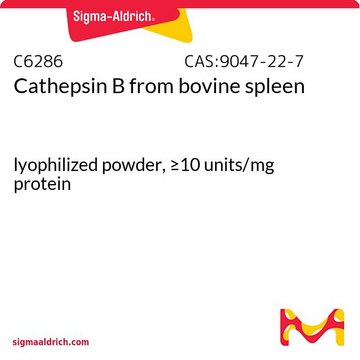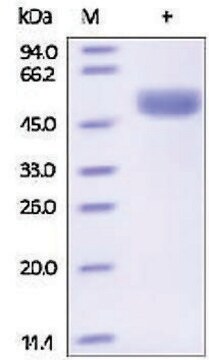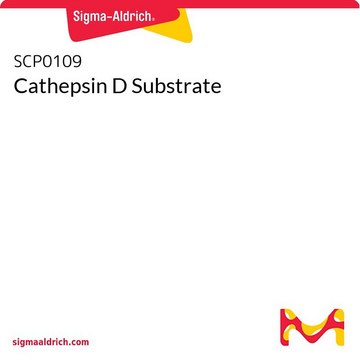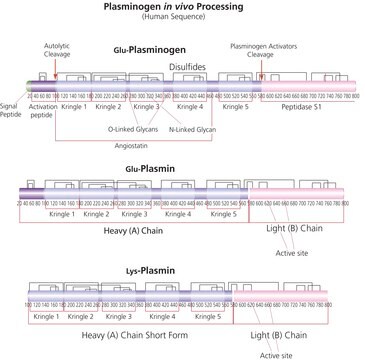C3138
Cathepsin D from bovine spleen
lyophilized powder, ≥2.0 units/mg protein
Synonym(s):
CTSD
About This Item
Recommended Products
biological source
bovine spleen
Quality Level
Assay
10—70% protein (biuret)
form
lyophilized powder
specific activity
≥2.0 units/mg protein
mol wt
~45 kDa
manufacturer/tradename
Sigma-Aldrich
technique(s)
activity assay: suitable
color
dark brown
suitability
suitable for molecular biology
UniProt accession no.
application(s)
life science and biopharma
storage temp.
−20°C
Gene Information
cow ... CTSD(282883)
Looking for similar products? Visit Product Comparison Guide
General description
Cathepsin D is a soluble endosomal-lysosomal aspartic protease and is synthesized in the rough endoplasmic reticulum as preprocathepsin D. It is encoded by the CTSD gene located in the 11p15.5 region.
Application
- in in vitro dose-dependent fluorometric activity assays.
- in in vitro myelin oligodendrocyte glycoprotein (MOG) digestion to study the uptake of malondialdehyde (MDA)-modified MOG and its implications in central nervous system autoimmunity.
- for enzymatic digestion of the proteoglycan moiety of the articular cartilage in order to determine its dynamic elastic modulus at two different levels of tissue organization.
- in cathepsin D activity assay.
Biochem/physiol Actions
Unit Definition
Physical form
inhibitor
related product
Storage Class Code
11 - Combustible Solids
WGK
WGK 3
Flash Point(F)
Not applicable
Flash Point(C)
Not applicable
Regulatory Listings
Regulatory Listings are mainly provided for chemical products. Only limited information can be provided here for non-chemical products. No entry means none of the components are listed. It is the user’s obligation to ensure the safe and legal use of the product.
JAN Code
C3138-VAR:
C3138-5UN:
C3138-BULK:
C3138-40UN:
C3138-20UN:
C3138-10UN:
Certificates of Analysis (COA)
Search for Certificates of Analysis (COA) by entering the products Lot/Batch Number. Lot and Batch Numbers can be found on a product’s label following the words ‘Lot’ or ‘Batch’.
Already Own This Product?
Find documentation for the products that you have recently purchased in the Document Library.
Customers Also Viewed
Our team of scientists has experience in all areas of research including Life Science, Material Science, Chemical Synthesis, Chromatography, Analytical and many others.
Contact Technical Service







